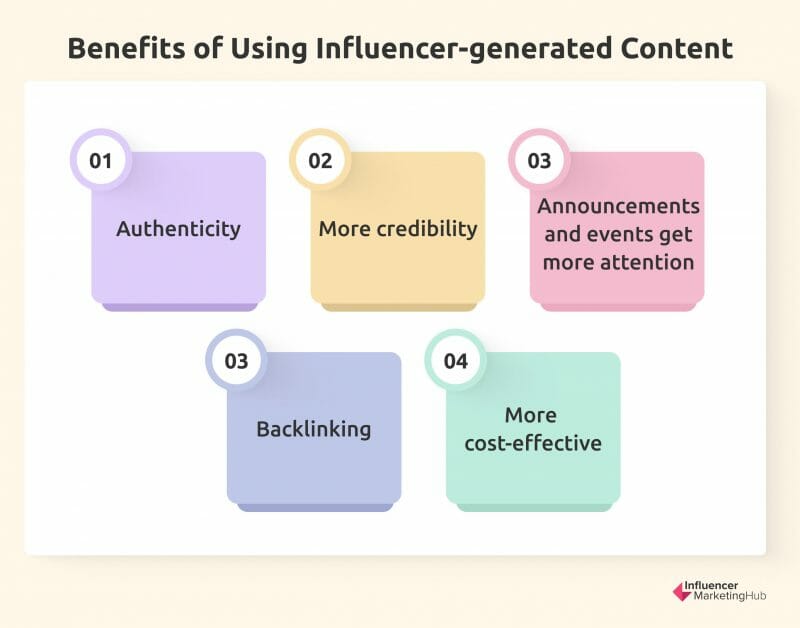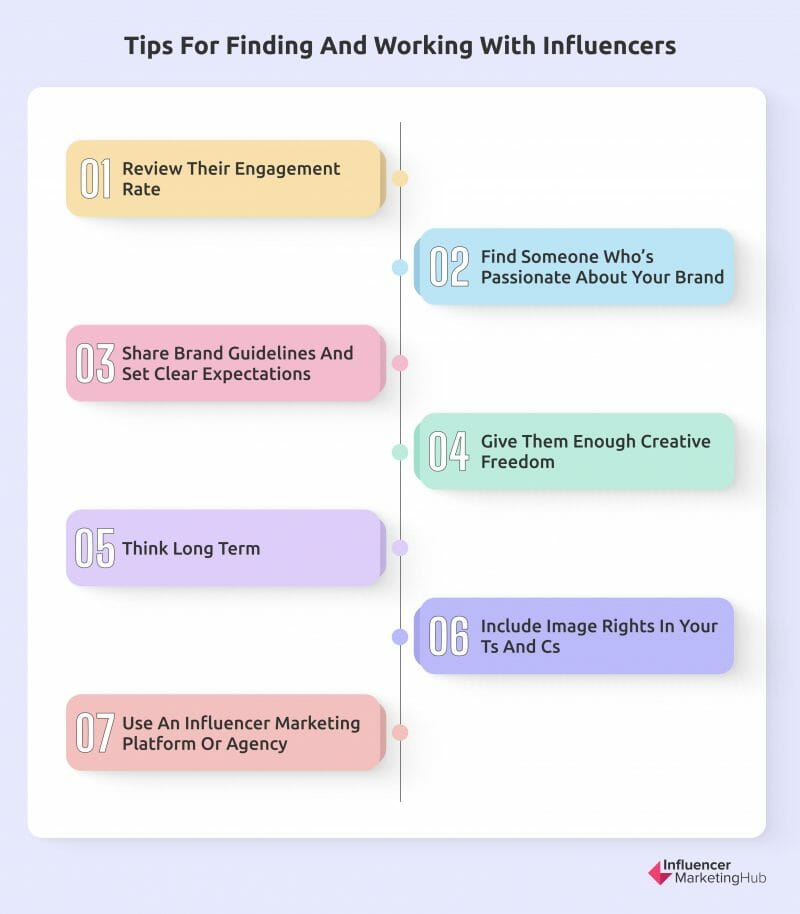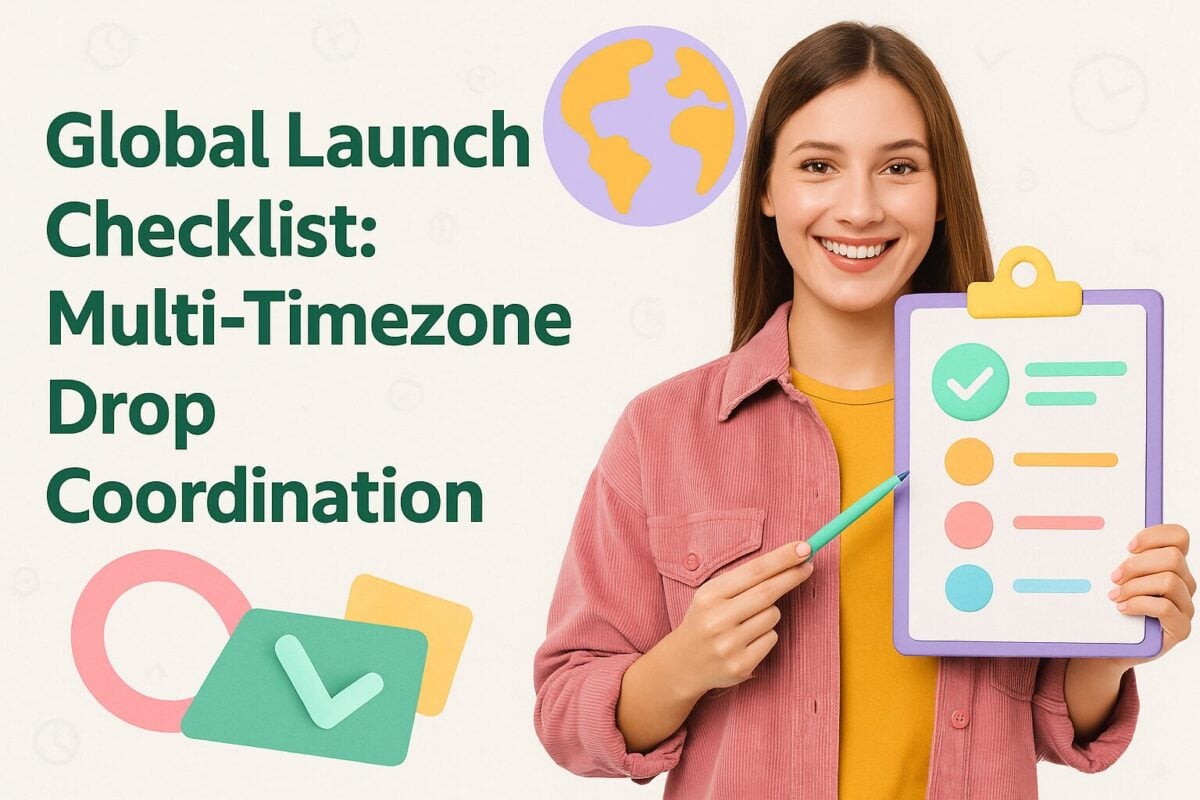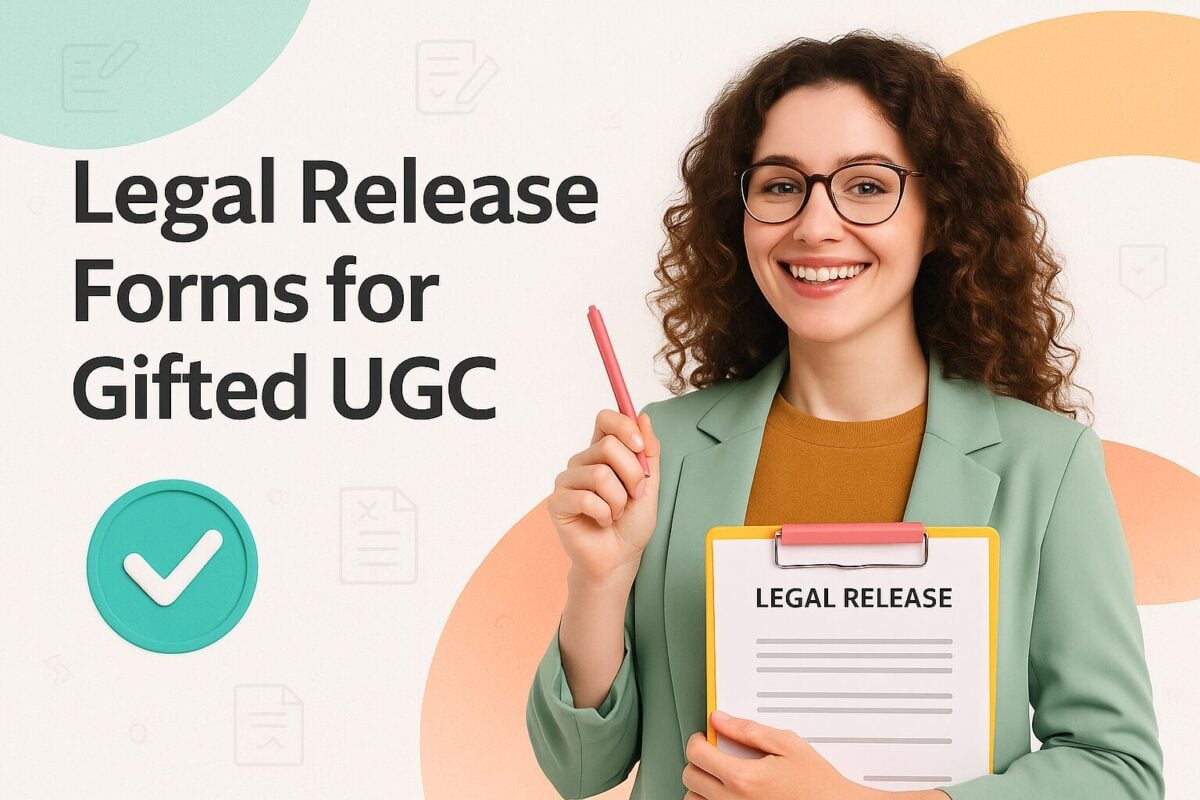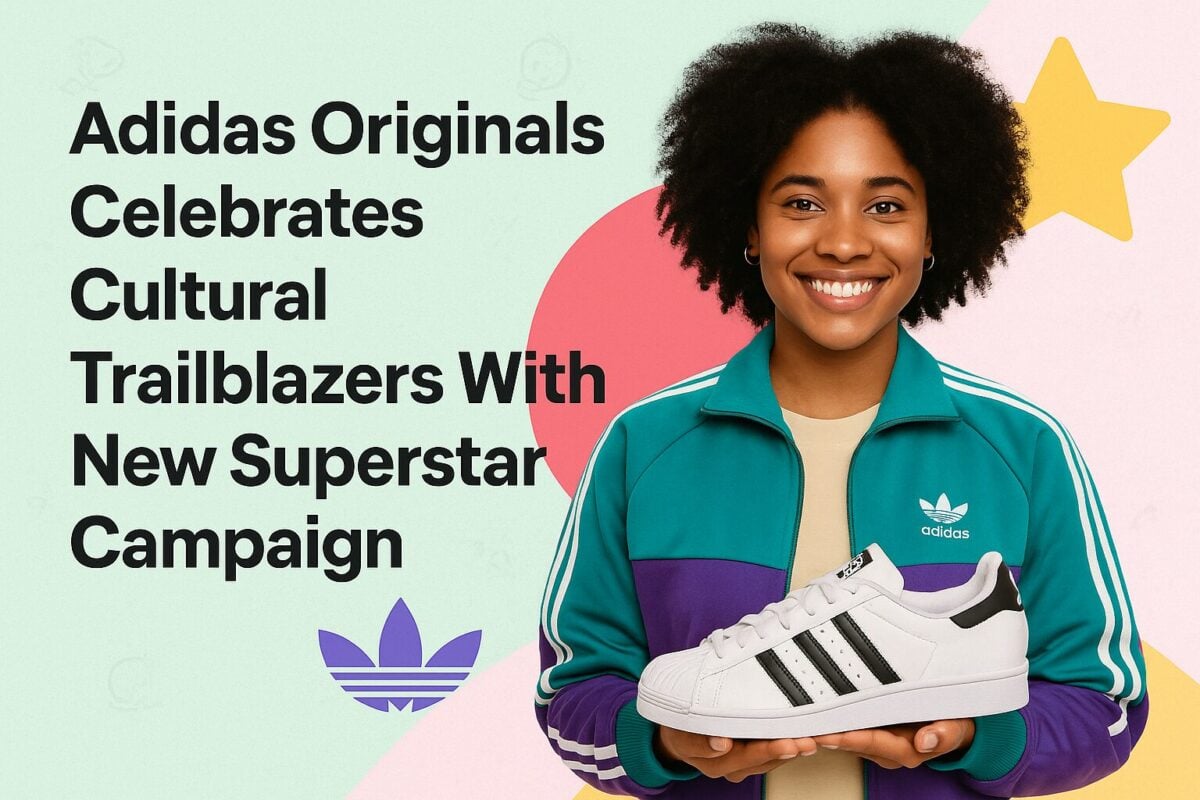Getting your brand noticed is getting much more difficult by the day. Not necessarily because of the sheer number of businesses in your market that you need to compete against, but also because audiences have started to drown out the noise. And, if they did “hear” what you have to say, the next challenge is to keep their attention for long enough to get your entire message across.
One way to get potential customers to sit up and take notice is to let someone else do the talking for a change — like an influencer.
After all, an influencer’s followers chose to sign up to receive notifications about them. In other words, they’re ready and eager to see, read, or listen to whatever it is that their favorite social media influencers are going to post about next.
If you’re not leveraging the power of influencer marketing yet, specifically when it comes to content creation, continue reading to find out what you’ve been missing out on. As you’ll learn, it’s actually pretty straightforward and will open a world of new opportunities.
How to Incorporate Influencer-generated Content Into Your Content Strategy:
What’s Influencer-generated Content?
In short, influencer-generated content refers to any content that an influencer sources that includes a positive mention of your brand. And, it doesn’t need to be brand sponsored content.
There are various skills that influencers can bring to the table to create content for your brand that can be used on multiple marketing channels. While influencer content is mostly associated with social media, you can also showcase it on your business website.
If you’re thinking that it sounds pretty much the same as user-generated content, you wouldn’t be wrong. The only real difference is that user-generated content can be created by anyone. For example, it can be a product review shared by a customer with no real significant social media presence.
That being said, it doesn’t mean that the influencer needs to have millions of followers (more about that later). Micro influencers can be very effective (if not more) at spreading the word about a brand, its events, products, and/or services.
Why Should You Use Influencer-generated Content?
Influencer Marketing Hub’s The State of Influencer Marketing 2022 report, in association with Refersion, has found that there’s been a sizable increase in content in recent years. More than 80% of participants indicated that they’ve increased the amount of content that they produced. As there’s been an increase in influencer marketing too, our deductive skills tell us that much of this new content must be influencer-created content.
The following five benefits of influencer content clearly show why your brand should also follow that path:
1. Authenticity
As influencers, especially nano and micro ones, generally interact with a smaller network of followers, their content and interactions are seen as more authentic. According to Neal Schaffer, an influencer marketing keynote speaker and consultant, there’s such a huge demand for authentic content that brands won’t be able to compete in feeds anymore without the help from an influencer. The alternative — paid social — is only going to become less effective.
Also, as social media users are craving more authentic content, the algorithms of social media platforms are also rewarding the efforts of creators.
So, it’s really a win-win. Not only do you receive more authentic content, but you’ll also enjoy better visibility on social platforms.
2. More Credibility
Consumers tend to trust the influencers that they follow more than paid ads or brand sponsored content. It’s crucial that your audience finds your content credible and as influencers are found to be trustworthy, the content that they create and share will also be deemed as credible.
3. Announcements and events get more attention
Content shared by influencers can generate more impressions and drive better engagement. This makes it especially suitable for announcements, like a new product, that are typically time-sensitive.
4. Backlinking
Not only will influencer-generated content help you to drive more sales, but it can also improve the search engine rankings of your website. In addition to driving more traffic to your site, blogger influencers’ websites probably have a high-domain authority. This means that if they link back to your website, it can improve your domain authority as well.
5. More cost-effective
Content form influencers will require less money and time to create. Plus, if you keep in mind that you’ll be able to repurpose the content, it becomes even more lucrative.
In fact, according to our influencer marketing survey, nearly 70% of respondents planned to increase their influencer marketing spend in 2022. This just proves that brands and marketing teams are well-aware of the effectiveness of influencer marketing.
7 Tips for Finding and Working With Influencers
You can only enjoy these advantages of influencer-generated content if you identify the most suitable ones for your niche and actively manage your working relationship. Here’s what to consider during your search and how you can help them to help you better:
1. Review their engagement rate
If you have to choose between engagement rate vs follower count, choose engagement rate. Hundreds of thousands of followers doesn't mean that they’re engaged and involved with the content that gets shared.
While our 2022 report about the influencer marketing industry has found that influencer fraud is down, it’s still a possible pitfall that you need to be aware of. So, it’s key that you use tools to double-check that the influencer is indeed authentic by being on the lookout for comments from bots and other forms of inauthentic engagement.
Not only should you pay attention to how followers engage with the influencer’s content but also vice versa. The way that an influencer responds to comments will tell you a lot about the type of connection they have with their audience. Plus, influencers taking the time to respond to comments is one of the best to improve engagement rate. So, it’s the opposite of a vicious cycle.
2. Find someone who’s passionate about your brand
Engagement rate can only bring you so far. If the influencer isn’t passionate about your brand and its products or services, potential customers will be able to tell. After all, what makes influencer marketing so powerful is that it’s seen as more authentic. However, if they’re pretending to be excited about the brand, you won’t be able to capitalize on that huge benefit.
3. Share brand guidelines and set clear expectations
Consistency is key. Even if you’ve been creating content mostly in-house till now, you would’ve needed a style guide, which is especially important for posting on social media.
Typically included in this type of doc are guidelines about:
- Audience personas
- Brand voice and tone
- Hashtag use
- Links to your different social media profiles
- Brand-specific language
- Interacting with audiences
- Design elements like color schemes, fonts, etc.
- A mood board or visual storyboard
- Content examples
Influencers will need similar guidelines. This will help to streamline communication and give them a better idea of the type of content that you have in mind.
4. Give them enough creative freedom
While you absolutely should share clear brand guidelines, your influencers should still have enough creative freedom. After all, they know their audiences much better than you and will know what type of content will get the best engagement. Remember, they also create content for a living.
What’s more, giving them the freedom to create will also help with building better influencer relationships tremendously. Basically, at the end of the day, they should still keep their (tone of) voice.
5. Think long term
If you’ve ever partnered with a digital marketing agency, the chances are good that you had to lock in their services for a couple of months minimum. And, no, it’s not because of money. Getting results, takes time.
The same applies to entrusting some of your content creation to influencers. Sure, you can launch a single influencer marketing campaign, but if you want to receive more authentic content, try to build a long-term relationship with your network of influencers.
6. Include image rights in your Ts and Cs
One of the benefits of working with influencers to generate content for your brand is that you can repurpose it. This way, you can use it on various other channels too.
For example, a how-to video on YouTube can be turned into a how-to guide shared on your blog. A short-form lifestyle video on TikTok can be included in your marketing email about product offers aimed at summer. You get the idea.
However, this becomes only possible if you have image rights. You might be eager to get the ball rolling, but make sure that you’re on the same page about who’ll own licensing rights after the collaboration. And, by the same page, interpret it quite literally. It’s always best to get this in writing.
7. Use an influencer marketing platform or agency
Entrusting some of the content creation to others can help to save time. However, if you have to manage every aspect of your collaborations with influencers alone, the time saved will only go towards tasks like eliminating fake influencers, communication, licensing rights, payouts, and reporting.
To reap the benefits of influencer content, it’s strongly recommended that you use an influencer marketing platform or agency, even if it’s only for influencer discovery. There are many great tools and agencies to choose from like:
Popular Types of Influencer-generated Content
While increasing sales and awareness are still the main objectives of brands when running an influencer campaign, more than a quarter (27.6%) use it primarily for user-generated content.
Influencer-generated content doesn’t have to be limited just to social media videos and photos. From how-to guides to AMA live-streaming sessions, there are various ways that you can incorporate content created by influencers into your business website too. Here are some ideas of the different types of content that you can ask your influencers to create.
1. How-to tutorials
According to a graph shared by Insider Intelligence, how-to tutorials is the type of influencer content that both UK and US social media followers want to see more of. While Q&A videos aren’t as in demand as how-to content, consumers often search for this type of content online as well. All in all, content in which your influencers answer frequently asked questions can show to your audience that they’re well-versed about your offering, helping to make their voice even more credible.
2. Lifestyle videos
Videos (or photos) that show how a product or service can complement consumers’ lifestyle can help with brand loyalty. When potential customers abandon their cart, including this type of content in follow-up emails can do wonders for conversions.
Lifestyle photos and videos shot by influencers can easily be included in many other types of email campaigns too. For example, it can quickly turn a dull, text-heavy email newsletter into an attractive email campaign that your email list will actually look forward to open.
3. Product reviews
Product reviews (like, for example, a before-and-after video) can be very informative. They’re also popular among consumers, with 32% indicating that they would like to see influencers share more product reviews.
This type of content can give influencers an opportunity to share info with your target audience that can help improve brand credibility, while at the same time setting your product apart from available alternatives. And, if showing off your products’ unique selling points is high up on your agenda, why not suggest a side-by-side comparison of a number of products?
Alternatively, if driving excitement is more important than highlighting specs, how about an unboxing video?
Whichever way you choose to review your products, this type of content can fit right in on a product description page or testimonials/reviews section. It’s great for social proof!
4. Guest posts
If you don’t have a dedicated in-house team of writers, maintaining a company blog is a nightmare. A solution is to delegate some of the writing, and who better than an influencer in your niche?
Not only can featuring a guest post written by an influencer get people excited about your blog (again), but as they have a great understanding of the issues that plague your audience, you’ll get a unique insight that your own writers might not have. Not all the content that your influencers generate has to be visual, there’s still a place for a well-written long-form blog post and it can be very effective to mix it up from time to time.
Wrapping Things Up
While similar to user-generated content, influencer-generated content has the benefit of reaching a bigger, more engaged group. It’s one of the best ways to put your brand in a positive light on various platforms.
Content from influencers doesn’t just have to be social media posts. Think bigger (or even more traditional). Guest bloggers can also delight your online community.
Whichever forms of content you decide to use, know that it can put your marketing on steroids and supercharge your efforts with very little work from your side. Concentrate on finding the best influencers for your niche audiences and nurture your relationship with influencers and there’s no reason why the content creation process needs to lead to burnout for any party.
Frequently Asked Questions
What’s better influencer-generated content or user-generated content?
Both influencer-generated content (IGC) and user-generated content (UGC) have benefits to offer. These shared benefits include freeing up the time of in-house content creators, boosting sales and engagement, and generating brand trust. Though, unlike UGC, with IGC you can reach a more engaged, niche audience and as influencers typically need to follow a higher standard, the quality of their posts can also be better. It will, for example, often include a call-to-action prompt that can help with conversion.
What are good examples of influencer-generated content?
Influencer-generated content is versatile and doesn’t necessarily just have to be social media posts, it can, for example, also include blog posts written by guest influencer bloggers that appear on a business website. Here are some examples of proven influencer-generated content:
- Short-form video demos
- Long-form video tutorials
- Before-and-after Facebook posts
- Product reviews and comparisons
- Memes
- Lifestyle photos and images
- Q&A videos
- Behind-the-scenes video clips
What should you look for in an influencer marketing platform?
Influencer marketing platforms and software solutions can make influencer discovery and campaign management much easier, but that’s if you choose a reliable tool. To help you find the best influencer marketing platform or software for your needs, here are some must-have features to keep in mind:
- API integration with the social media networks where your target audience is active
- Tools for finding and discovering the best influencers for your niche
- Communication and payouts automation
- Real-time reporting
What is a micro influencer?
A micro influencer is considered as an influencer who has between 10,000 and 75,000 followers on social media. Influencers with fewer than 10,000 followers are categorized as nano influencers. Unlike nano influencers that are just getting into the game, micro influencers are seen as emerging influencers that have already identified a specific category that they’re passionate about. Working with micro influencers, especially those with fewer than 25,000 followers, can offer a number of benefits like a high engagement rate.
How can you optimize your influencer-generated content?
There are a number of strategies that you can implement to amplify the content that influencers created about your brand and make the most of this effective marketing strategy. These include:
- Incorporating it into your paid ads
- Repurposing it into a shoppable ad on a social media platform
- Including it in your weekly/monthly email newsletter
- Launching a Throwback Thursday (#tbt) campaign

